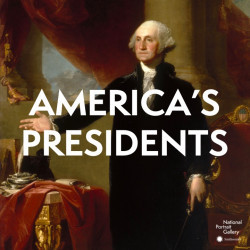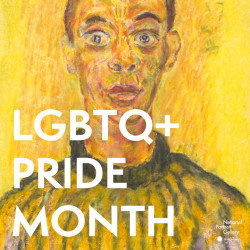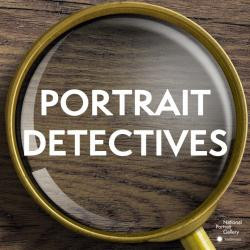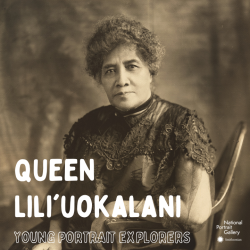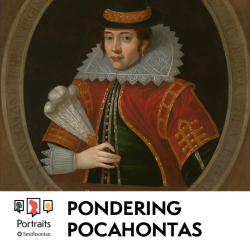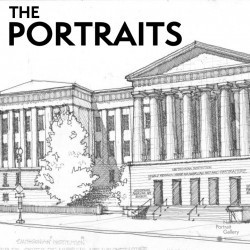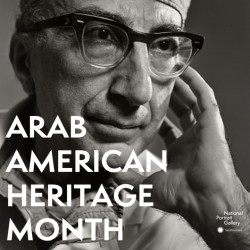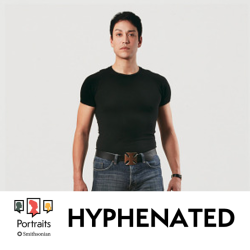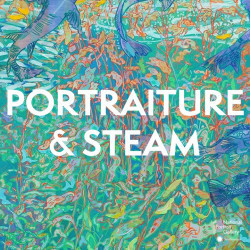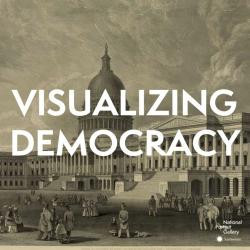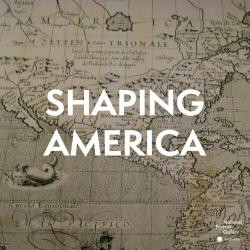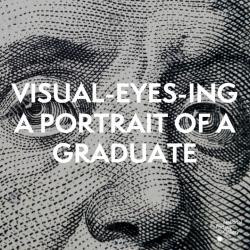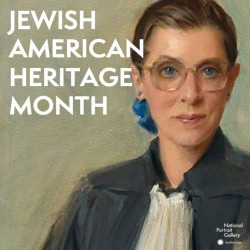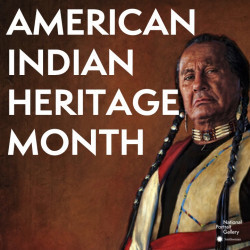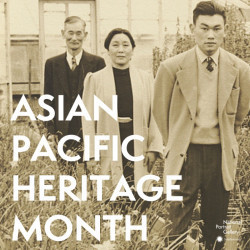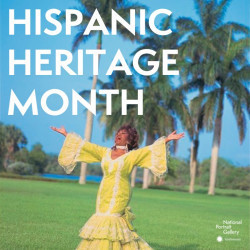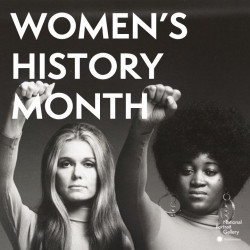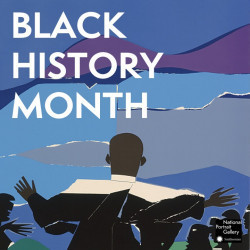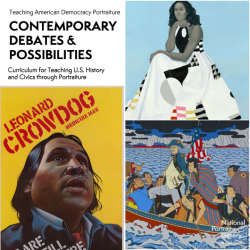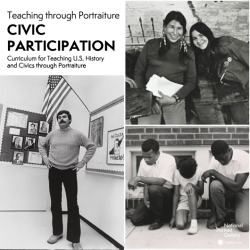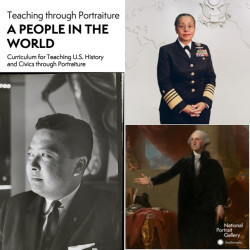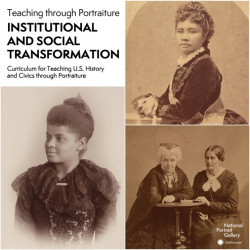Nicole Vance's collections
America's Presidents
<p>This Learning Lab collection complements the National Portrait Gallery student program, America's Presidents.</p>
<p></p>
<p>The America’s Presidents student program focuses on the idea of what we can learn about presidents and their legacies from how they are portrayed in their portraits, on what it means to look “presidential” in a portrait, and on how the portrayal of presidents has changed over time.</p>
<p></p>
<p>After completing the program, students will be better able to:<br>● Identify key components of a portrait and analyze how these components fit into the way the sitter is defined/remembered.<br>● Compare and contrast what different portraits reflect about how each president is portrayed and remembered.<br>● Identify American presidents and analyze their contributions to U.S. History.</p>
<p></p>
<p>#NPGteach</p>
 Nicole Vance
Nicole Vance
90
LGBTQ+ Pride Month with the National Portrait Gallery
<p>Meet the LGBTQ+ pioneers who shaped the history, development, and culture of the United States of America. Use this collection to celebrate LGBTQ+Pride Month, LGBTQ+ History Month, and embrace LGBTQ+ voices in the classroom year round. This collection reflects the history of portraiture in the United States- we recognize that who is represented and how one is represented reflects the country's flaws as well as it's strengths.</p>
<p>#NPGteach</p>
 Nicole Vance
Nicole Vance
133
Portrait Detectives
<p>This Learning Lab complements the National Portrait Gallery's student program, Portrait Detectives.</p>
<p>Students will be transformed into Portrait Detectives, searching portraits for and analyzing clues to learn more about significant Americans. Through interactive discussions and sketching and writing activities, students will read, compare, and contrast portraits across the collection. This module is divided into the following themes to best support your curriculum and student interests: Presidents, Activists, Icons, and Scientists.</p>
<p><strong>Objectives:</strong></p>
<p><strong></strong>After completing this lesson, students will be better able to: </p>
<ul>
<li>Identify important Americans and analyze their contributions to U.S. History <br>
</li>
<li>Identify key components of a portrait and discuss what we can learn about the sitter through these components.</li></ul>
<p><a href="https://npg.si.edu/teachers/school-groups">Schedule</a> a virtual Portrait Detectives program with National Portrait Gallery educators.</p>
<p>#NPGteach</p>
<p><br></p>
 Nicole Vance
Nicole Vance
90
Arab American Heritage Month with the National Portrait Gallery
<p>Meet the Arab Americans who shaped the history, development, and culture of the United States of America from 1900-present. Use this collection to celebrate Arab American Heritage Month and embrace Arab American voices in your classroom year-round!</p>
<p>#NPGteach</p>
 Nicole Vance
Nicole Vance
86
PORTRAITS Podcast: Hyphenated - The Intersect of Asian-American Stories in the United States
<p>In this lesson, students will analyze historical contexts through the exploration of portraiture, discuss the artistic choices that portrait artists make and consider how such decisions can reveal the artists’ viewpoints and influence the viewers’ understanding of the sitters’ identity. </p>
<p>This lesson was written by Asia Stanislaus, a member of the National Portrait Gallery's Teacher Advisory Board, who teaches at MS 447 in Brooklyn, New York.</p>
 Nicole Vance
Nicole Vance
28
Portraiture and STEAM (Science, Technology, Engineering, Art, and Math)
<p>This Learning Lab Collection complements the National Portrait Gallery student program, Portraiture and STEAM.</p>
<p></p>
<p>Students will explore the ways portraiture can be a springboard to discuss STEAM concepts (Science, Technology, Engineering, Art, and Math). By analyzing portraits, students will consider the sitters’ stories and recognize their contributions to the various STEAM fields. During the program, there will be opportunities to examine a broad range of STEAM topics to allow for classroom connections and emphasis on relevance. </p>
<p></p>
<p>After completing the program, students will be better able to:</p>
<ul><li>Identify key components of a portrait and discuss what one can learn about the sitter through these components.</li><li>Identify and analyze the contributions that sitters made in their STEAM fields of expertise.</li><li>Use the museum’s collection and portraiture as a springboard to exploring a variety of STEAM concepts.</li></ul>
<p>#NPGteach</p>
 Nicole Vance
Nicole Vance
75
Visual-EYES-ing a Portrait of a Graduate
<p>Visual-EYES-ing a Portrait of a Graduate is aligned with Fairfax County Public School's 6th grade standards and curriculum. This Learning Lab collection complements the National Portrait Gallery's student program of the same name.</p>
<p>The Visual-EYES-ing a Portrait of a Graduate student program explores prominent Americans who embody communication, collaboration, resilience, creativity, and global citizenship, while investigating how these traits led to the individuals’ significant contributions to American history and culture. During their visit, students will communicate, collaborate, and engage in critical thinking as they consider portraiture. The program strives to inspire, connect, and provide relevance to the students as they complete/grow into their own self-portrait as a graduate.</p>
<p>After completing this lesson, students will be better able to:<br></p>
<ul><li>Identify key components of a portrait and discuss what we can learn about the sitter through these components, as well as investigate how these components reveal the viewpoints (of artist, sitter, and viewer) represented through the depiction of the sitters</li><li>Identify important Americans from colonial times to the present and analyze their contributions to US history and determine how they exemplify Portrait of a Graduate attributes</li><li>Analyze the various perspectives that artists bring to their work and examine the intended messages of the artists to discover a variety of ways to represent identity while determining if the portrait is realistic or idealized, representational or abstract, or if it fits on a spectrum</li><li>Utilize critical thinking, communication, collaboration, and citizenship skills.</li></ul>
<p><a href="https://npg.si.edu/teachers/school-groups">Schedule</a> a virtual Visual-EYES-ing a Portrait of a Graduate student program with National Portrait Gallery educators.</p>
<p>#NPGteach #FCPS</p><p>Keywords: Portraits, Attributes, Communicator, Collaborator, Ethical, Global Citizenship, Creative, Critical Thinking, Goal Directed, Resilient Individual, Significant Americans, FCPS, Sixth Grade</p>
<ul></ul>
 Nicole Vance
Nicole Vance
58
Jewish American Heritage Month with the National Portrait Gallery
<p>Meet the Jewish Americans who shaped the history, development, and culture of the United States of America. Use this collection to celebrate Jewish Heritage Month and embrace Jewish voices in the classroom year round.<em> </em>This collection features some but not all portraits of Jewish American sitters found in the National Portrait Gallery's permanent collection. <em>Please note that the sitters in this collection are American citizens who are Jewish whether by culture, ethnicity, or religion. </em></p>
<p>#NPGteach<br></p>
 Nicole Vance
Nicole Vance
236
American Indian Heritage Month with the National Portrait Gallery
<p>Meet the Native Americans who shaped the history, development, and culture of the United States of America. Use this collection to celebrate American Indian Heritage Month and embrace indigenous voices in the classroom year round. Native peoples have lived throughout what is now the United States since time immemorial and continue to make homes and communities here today. This collection mirrors parts rather than the whole of this continuing story. It also reflects the history of portraiture in the United States- we recognize that who is represented and how one is represented reflects the country's flaws as well as it's strengths<br></p>
<p>#NPGteach</p>
<p><strong>Keywords: </strong>Portraits, American Indian Heritage Month, American Indian, Native American, Indigenous, Ani-Yunwiya (Cherokee), Diné (Navajo), Chata (Choctaw), Sioux, Wah-Zha-Zhi (Osage), Ojibwe (Chippewa), Apache, Niitsitapi (Blackfeeet), Haudenosaunee (Iroquois), Nuuchu (Ute), Nuwuvi (Paiute), Seminole, Muscogee (Creek), Quapaw, Portraits</p>
 Nicole Vance
Nicole Vance
171
Black History Month with the National Portrait Gallery
<p>Meet the Black Americans who shaped the history, development, and culture of the United States of America from 1700-present. Use this collection to celebrate Black History Month and embrace Black voices in your classroom year-round! </p>
<p>This collection mirrors parts rather than the whole of African American history and culture. It also reflects the history of portraiture in the United States, we recognize that who is represented and how one is represented reflects the country's flaws as well as it's strengths<br></p>
<p>#NPGteach</p>
 Nicole Vance
Nicole Vance
240
Teaching American Democracy through Portraiture: We the People
<p>In this Learning Lab collection, portraits are used entry point to teach about citizens and residents of the United States. Throughout this collection, students will examine not only the portrait subjects but will also gain insight into the larger historical time period in which the subjects lived and how they made change in their communities and the United States.</p>
<p>This collection contains three lessons that highlight the many people, ideas, and cultures of the United States: "Reading Portraiture:</p>
<p>Same, Different, Connect, Engage," "Engaging History: Expanding Democracy," and "Connections to the Present: Reading Election Posters."</p>
<p>Review Reading Portraiture 101 before beginning the lessons.</p>
<p>#NPGteach #EducatingForDemocracy</p>
 Nicole Vance
Nicole Vance
54
Teaching American Democracy through Portraiture: A People with Contemporary Debates & Possibilities
<p>In this Learning Lab collection, portraits of Michelle Obama, Leonard Crow Dog, and Roger Shimomura are used as an entry point to teach about contemporary debates and possibilities. Using <a href="https://www.educatingforamericandemocracy.org/">Educating for American Democracy</a>'s roadmap as a guide, this lesson centers on the theme <a href="https://www.educatingforamericandemocracy.org/7themes/contemporary-debates-possibilities/">A People with Contemporary Debates & Possibilities</a>. Students will examine not only the portrait subjects but will also gain insight into how their biography fits into American democracy.<br></p>
<p>This collection contains three lessons that highlight activists: "Reading Portraiture: See – Feel - Wonder - Connectx2," "Engaging History: Perspectives on the American Indian Movement," and "Connections to the Present: Identity and Patriotism" with the last lesson containing an art \making prompt for Educating for American Democracy's Design Challenge: <a href="https://www.educatingforamericandemocracy.org/k-12-student-design-challenge-awards/#civic-honesty">Civic Honesty, Reflective Patriotism</a></p>
<p>Review <a href="https://learninglab.si.edu/collections/reading-portraiture-101/6VeUfzDnKE87HIOP">Reading Portraiture 101 </a>before beginning the lessons.</p>
<p>#NPGteach #EducatingForDemocracy<br></p>
 Nicole Vance
Nicole Vance
51

